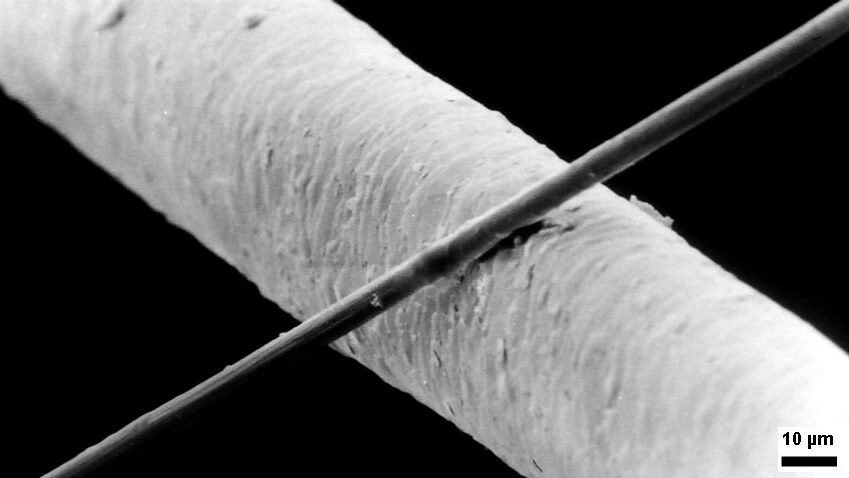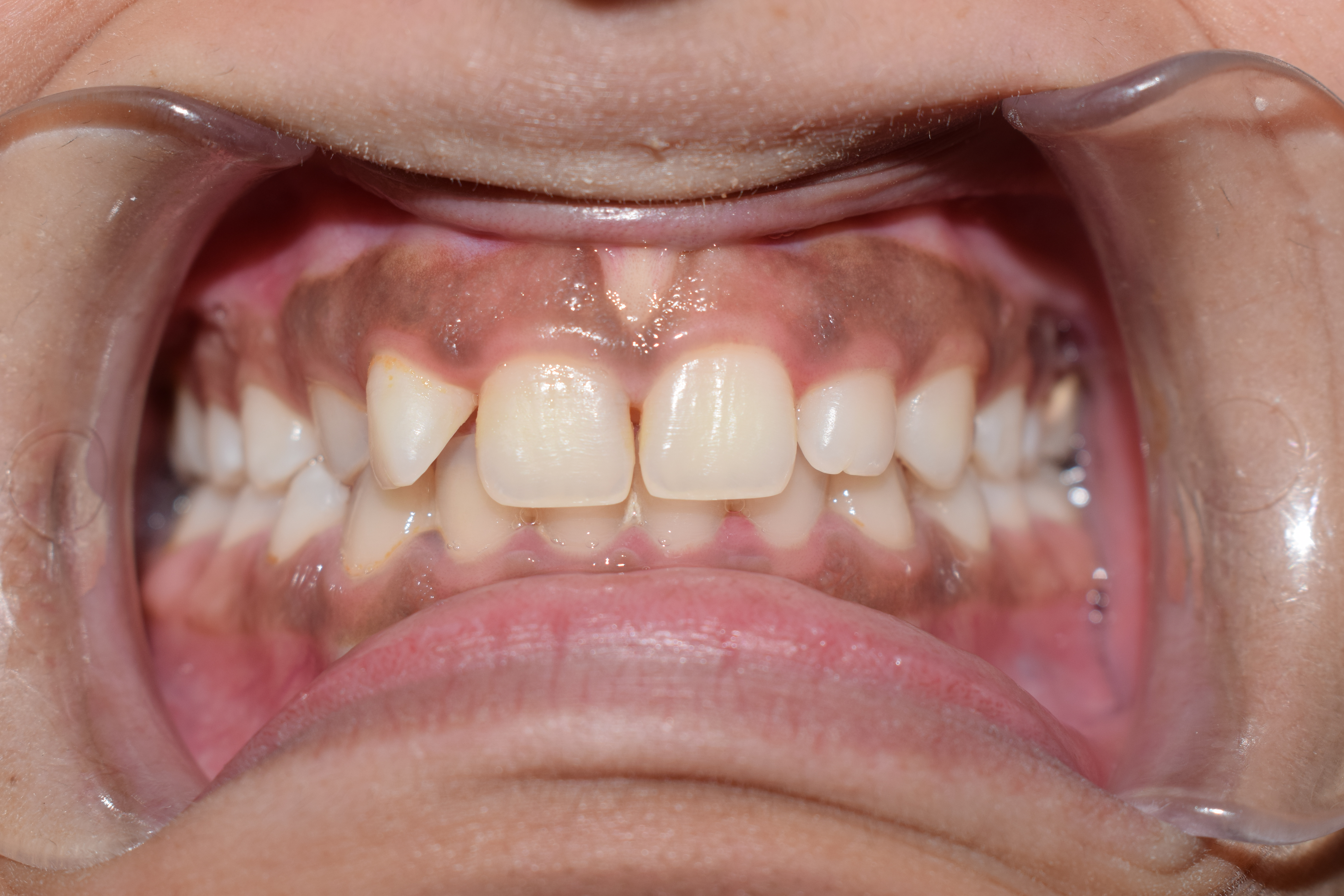|
Temporary Crown
A temporary crown (provisional crown, interim crown) is a temporary (short-term) crown used in dentistry. Like other interim restorations, it serves until a final (definitive) restoration can be inserted. Usually the temporary crown is constructed from acrylic resins (monomethacrylate-based/polymethacrylate-based) or, chemical-cure/light cure composite (dimethacrylate-based), although alternative systems using aluminium crown forms are occasionally used. Temporary crowns function to protect the tooth, prevent teeth shifting, provide cosmetics, shape the gum tissue properly, and prevent sensitivity. Function The functions of temporary crowns are: *Maintain the dental aesthetic ::Provisional restorations offer dental aesthetics purposes, especially for anterior teeth. A patient can evaluate the aesthetic of the temporary crown if that is to be changed in the definitive restoration. * Maintain the tooth's function ::Overeruption of opposing teeth and drifting of adjacent teeth ... [...More Info...] [...Related Items...] OR: [Wikipedia] [Google] [Baidu] |
Crown (dentistry)
In dentistry, a crown most commonly refers to a dental cap, a type of dental restoration that completely caps or encircles a tooth or dental implant. A crown may be needed when a large cavity threatens the health of a tooth. A crown is typically bonded to the tooth by dental cement. They can be made from various materials, which are usually fabricated using ''indirect methods''. Crowns are used to improve the strength or appearance of teeth and to halt deterioration. While beneficial to dental health, the procedure and materials can be costly. The most common method of crowning a tooth involves taking a dental impression of a tooth prepared by a dentist, then fabricating the crown outside of the mouth. The crown can then be inserted at a subsequent dental appointment. This ''indirect method'' of tooth restoration allows use of strong restorative material requiring time-consuming fabrication under intense heat, such as casting metal or firing porcelain, that would not be po ... [...More Info...] [...Related Items...] OR: [Wikipedia] [Google] [Baidu] |
Dentistry
Dentistry, also known as dental medicine and oral medicine, is the branch of medicine focused on the teeth, gums, and mouth. It consists of the study, diagnosis, prevention, management, and treatment of diseases, disorders, and conditions of the mouth, most commonly focused on dentition (the development and arrangement of teeth) as well as the oral mucosa. Dentistry may also encompass other aspects of the craniofacial complex including the temporomandibular joint. The practitioner is called a dentist. The history of dentistry is almost as ancient as the history of humanity and civilization with the earliest evidence dating from 7000 BC to 5500 BC. Dentistry is thought to have been the first specialization in medicine which have gone on to develop its own accredited degree with its own specializations. Dentistry is often also understood to subsume the now largely defunct medical specialty of stomatology (the study of the mouth and its disorders and diseases) for which ... [...More Info...] [...Related Items...] OR: [Wikipedia] [Google] [Baidu] |
Dental Restoration
Dental restoration, dental fillings, or simply fillings are treatments used to restore the function, integrity, and morphology of missing tooth structure resulting from caries or external trauma as well as to the replacement of such structure supported by dental implants. They are of two broad types—''direct'' and ''indirect''—and are further classified by location and size. A root canal filling, for example, is a restorative technique used to fill the space where the dental pulp normally resides. Tooth preparation Restoring a tooth to good form and function requires two steps: # preparing the tooth for placement of restorative material or materials, and # placement of these materials. The process of preparation usually involves cutting the tooth with a rotary dental handpiece and dental burrs, a dental laser, or though air abrasion to make space for the planned restorative materials and to remove any dental decay or portions of the tooth that are structurally unsound. ... [...More Info...] [...Related Items...] OR: [Wikipedia] [Google] [Baidu] |
Acrylic Resin
186 px, Polyhydroxyethylmethacrylate is a typical acrylate resin. An acrylic resin is a thermoplastic or thermosetting plastic substance typically derived from acrylic acid, methacrylic acid and acrylate monomers such as butyl acrylate and or methacrylate monomers such as methyl methacrylate. Thermoplastic acrylics designate a group of acrylic resins typically containing both a high molecular weight and a high glass transition temperature which exhibit lacquer dry capability. Acrylic resins designed for use in two component systems for crosslinking with isocyanate are referred to as polyols and are made with the monomers previously mentioned as well as hydroxy monomers such as hydroxy ethyl methacrylate. Acrylic resins are produced in different liquid carriers such as a hydrocarbon solvent (solventborne acrylics or solution acrylics solventborne acrylic selector) or water in which case they are referred to as emulsions or dispersions and they are also provided in 100% solids ... [...More Info...] [...Related Items...] OR: [Wikipedia] [Google] [Baidu] |
Composite Material
A composite material (also called a composition material or shortened to composite, which is the common name) is a material which is produced from two or more constituent materials. These constituent materials have notably dissimilar chemical or physical properties and are merged to create a material with properties unlike the individual elements. Within the finished structure, the individual elements remain separate and distinct, distinguishing composites from mixtures and solid solutions. Typical Materials, engineered composite materials include: *Reinforced concrete and masonry *Composite wood such as plywood *Reinforced plastics, such as fibre-reinforced polymer or fiberglass *Ceramic matrix composites (composite armor, composite ceramic and metal matrices) *Metal matrix composites *and other Advanced composite materials (engineering), advanced composite materials There are various reasons where new material can be favoured. Typical examples include materials which are less ex ... [...More Info...] [...Related Items...] OR: [Wikipedia] [Google] [Baidu] |
Aluminium
Aluminium (aluminum in AmE, American and CanE, Canadian English) is a chemical element with the Symbol (chemistry), symbol Al and atomic number 13. Aluminium has a density lower than those of other common metals, at approximately one third that of steel. It has a great affinity towards oxygen, and Passivation (chemistry), forms a protective layer of Aluminium oxide, oxide on the surface when exposed to air. Aluminium visually resembles silver, both in its color and in its great ability to reflect light. It is soft, Magnetism, non-magnetic and ductility, ductile. It has one stable isotope, 27Al; this isotope is very common, making aluminium the twelfth most common element in the Universe. The radioactivity of Aluminum-26, 26Al is used in Radiometric dating, radiodating. Chemically, aluminium is a post-transition metal in the boron group; as is common for the group, aluminium forms compounds primarily in the +3 oxidation state. The aluminium cation Al3+ is small and h ... [...More Info...] [...Related Items...] OR: [Wikipedia] [Google] [Baidu] |
Gums
The gums or gingiva (plural: ''gingivae'') consist of the mucosal tissue that lies over the mandible and maxilla inside the mouth. Gum health and disease can have an effect on general health. Structure The gums are part of the soft tissue lining of the mouth. They surround the teeth and provide a seal around them. Unlike the soft tissue linings of the lips and cheeks, most of the gums are tightly bound to the underlying bone which helps resist the friction of food passing over them. Thus when healthy, it presents an effective barrier to the barrage of periodontal insults to deeper tissue. Healthy gums are usually coral pink in light skinned people, and may be naturally darker with melanin pigmentation. Changes in color, particularly increased redness, together with swelling and an increased tendency to bleed, suggest an inflammation that is possibly due to the accumulation of bacterial plaque. Overall, the clinical appearance of the tissue reflects the underlying histology ... [...More Info...] [...Related Items...] OR: [Wikipedia] [Google] [Baidu] |
Dental Cement
Dental cements have a wide range of dental and orthodontic applications. Common uses include temporary restoration of teeth, cavity linings to provide pulpal protection, sedation or insulation and cementing fixed prosthodontic appliances. Recent uses of dental cement also include two-photon calcium imaging of neuronal activity in brains of animal models in basic experimental neuroscience. Traditional cements have separate powder and liquid components which are manually mixed to form a viscous liquid. The liquid sets to form a brittle solid after application on the treated surface. More advanced cements, such as GIC, can come in capsules and are mechanically mixed using rotating or oscillating mixing machines. Ideal cement properties * Non irritant – many cements are acidic and irritate the pulp. However, on setting there is a rapid increase in pH. Polycarboxylate cement is considered the most biocompatible type due to having the most rapid pH rise. * Provide a good marginal se ... [...More Info...] [...Related Items...] OR: [Wikipedia] [Google] [Baidu] |
Overeruption
In dentistry, overeruption is the physiological movement of a tooth lacking an opposing partner in the dental occlusion. Because of the lack of opposing force and the natural eruptive potential of the tooth there is a tendency for the tooth to erupt out of the line of the occlusion. Etymology The physiological movement of a tooth lacking an opposing partner in the dental occlusion is termed overeruption, hypereruption, supraeruption, supereruption or continuous eruption. Pathophysiology Because of the lack of opposing force and the natural eruptive potential of the tooth there is a tendency for the tooth to erupt out of the line of the occlusion. Not all teeth lacking an opposing tooth overerupt, even in long term. Unopposed upper jaw molars overerupt more than the unopposed lower jaw molars. It is more severe in young people and periodontically affected people. The changes are most visible in the first year after the loss of the opposing tooth. Treatment A systematic revie ... [...More Info...] [...Related Items...] OR: [Wikipedia] [Google] [Baidu] |
Prosthodontology
Prosthodontics, also known as dental prosthetics or prosthetic dentistry, is the area of dentistry that focuses on dental prostheses. It is one of 12 dental specialties recognized by the American Dental Association (ADA), Royal College of Surgeons of England, Royal College of Surgeons of Edinburgh, Royal College of Surgeons of Ireland, Royal College of Surgeons of Glasgow, Royal College of Dentists of Canada, and Royal Australasian College of Dental Surgeons. The ADA defines it as "the dental specialty pertaining to the diagnosis, treatment planning, rehabilitation and maintenance of the oral function, comfort, appearance and health of patients with clinical conditions associated with missing or deficient teeth or oral and maxillofacial tissues using biocompatible substitutes." History Dental prostheory was pioneered by French surgeon Pierre Fauchard during the late 17th and early 18th century. Despite the limitations of the primitive surgical instruments, Fauchard discovered ... [...More Info...] [...Related Items...] OR: [Wikipedia] [Google] [Baidu] |





